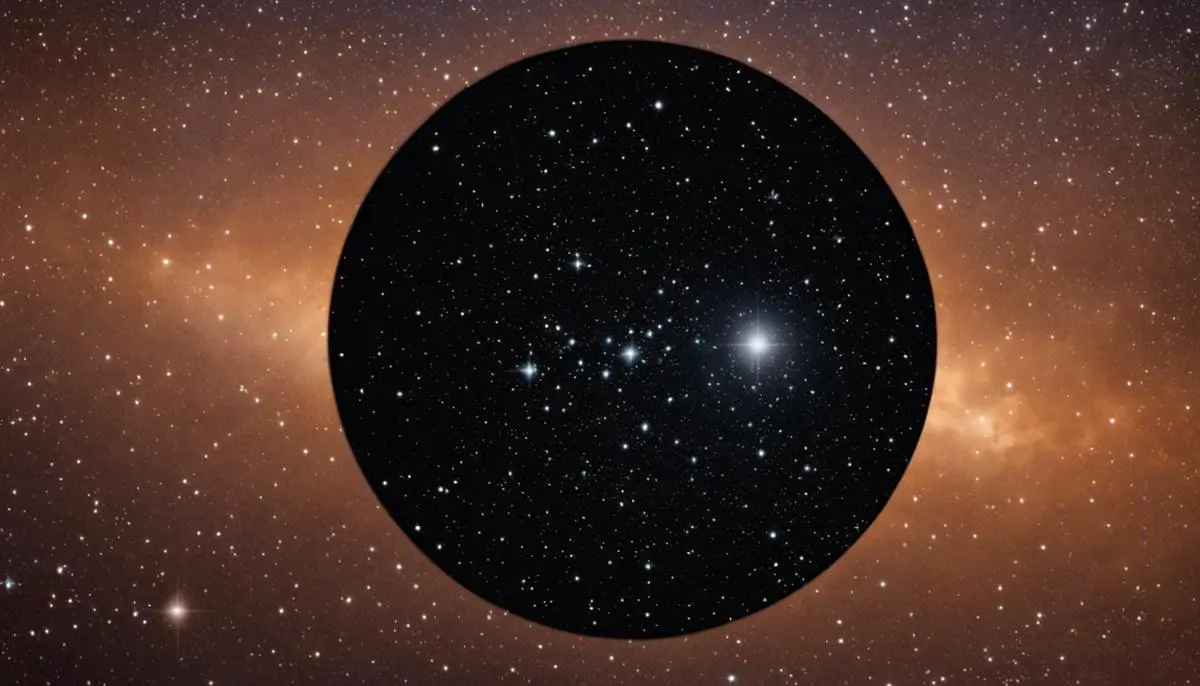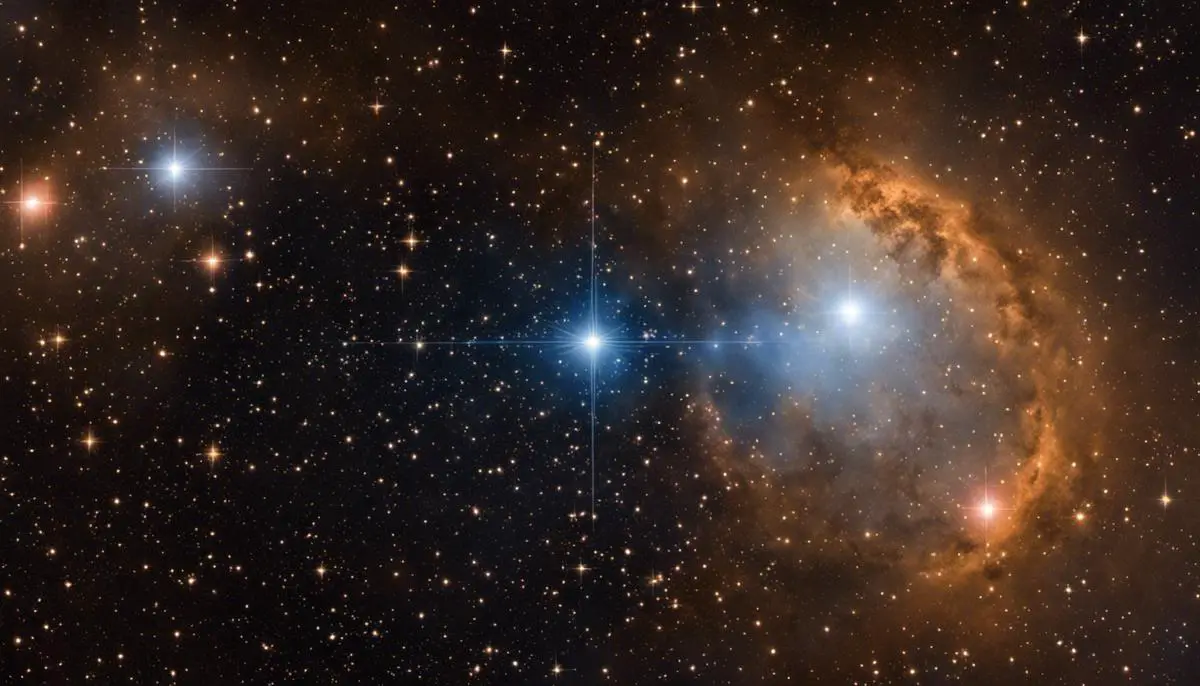Sirius Star, otherwise famously known as the ‘Dog Star’, has held an irreplaceable position in our night skies and in the folklore and myths of various cultures. Riveting because of its noticeable brightness, its striking color, and the astronomical constellation it belongs to, Sirius has stirred the curiosity of astronomers as well as of those who simply gaze upon the starry sky in awe and wonder. This star doesn’t just serve to beautify our night sky but also harbors some truly interesting scientific and astronomical characteristics. Whether diving into its dual-star system with Sirius A and Sirius B, or decoding its life cycle, or discovering its considerable distance from Earth, each aspect of Sirius is compelling in its own way. Across centuries, this celestial object has also carved out an important place in mythology and culture, from the ancient Egyptian to the Greek, transcending time and geography.
Identification and Distinct Features of Sirius Star
Brightest Star: Sirius’ Luminosity and Size
Sirius is often recognized due to its extreme brilliance. Known as the brightest star in the Earth’s night sky, Sirius takes the lead because of its closeness to our planet and its significant radiative power. As the fifth closest known star to us, Sirius lies at a distance of only 8.6 light-years away. Its luminosity or intrinsic brightness surpasses our sun’s brightness almost 25 times. However, its size is about twice that of our sun.
Color and Constellation: Appreciating Sirius’ Visual Features
The color of Sirius is predominantly a bluish-white hue. This is attributed to its surface temperature of around 9940 Kelvin. The varying colors people claim to witness, ranging from red and blue to green and white, are typically a consequence of the star’s twinkling or scintillation rather than its true color.
From an astronomical viewpoint, Sirius is part of the constellation Canis Major, often depicted as a big dog. Because of its supremely bright stare from Canis Major – the Greater Dog constellation, Sirius has received the nickname “Dog Star”. The constellation Canis Major is easily visible from the earth’s northern hemisphere in winter months.
Nomenclature: Understanding the ‘Dog Star’ and other names
Sirius’ famous nickname, the “Dog Star”, is traced back to ancient Greek observations. The moniker correlates with the hottest summertime period known as the “dog days”, from July to mid-August, since Sirius would rise and set with the sun during this time.
This star does not only go by the name Sirius or the “Dog Star”. It is also called Alpha Canis Majoris, signifying its status as the most luminous star in the Canis Major constellation. The name Sirius comes from the Greek word ‘Seirios’ which signifies ‘glowing’ or ‘scorcher’. As such, Sirius has a deep-rooted mythological and cultural importance across history and civilizations.
Binary Star System: Sirius A and Sirius B
Sirius is not a single star but, in fact, a binary star system – comprising Sirius A and Sirius B. Sirius A is the more massive and brighter of the two. On the other hand, Sirius B, a faint white dwarf star, was once a massive star like Sirius A but has now shed most of its material. Despite being less visible from Earth, Sirius B plays a significant role in the system’s dynamics, as the two stars orbit around their common center of mass every 50.1 years. This, in turn, has been instrumental in studying the masses and gravitational effects of white dwarf stars.
Let’s delve into the fascinating realm of Sirius, a stellar body that captivates us with its close proximity, radiant luminosity, and singular binary system dynamics. Residing in the celestial depth, Sirius serves as a testament to the universe’s immense mysteries and awe-inspiring wonders.

Astronomical Characteristics of Sirius Star
How Far is Sirius and How Bright Does it Shine?
Sirius, although not the closest star to us, does not reside significantly far away in astronomical standards. Situated in the Canis Major constellation of our Southern Hemisphere, it’s a mere 8.6 light-years (approximately 2.64 parsecs) away from Earth. As it stands with regards to apparent magnitude, Sirius arguably outshines all, boasting an apparent magnitude of -1.46. Coupled with its relative closeness, its high magnitude allows Sirius to out glimmer other celestial bodies from our worldly perspective.
Dual-Star System: Sirius A and Sirius B
What makes Sirius even more intriguing is its binary or dual-star system. Sirius is actually a system of two stars: Sirius A and Sirius B. Sirius A is the larger, brighter component, which is about twice as massive as our Sun and 25 times more luminous. One of the reasons why Sirius shines so brightly in our sky is due to the intense light generated by Sirius A.
Satellite to Sirius A is Sirius B, a faint white dwarf star. Despite being difficult to observe from Earth due to the brightness of Sirius A, Sirius B is incredibly dense and carries a significant amount of the system’s total mass.
The Life Cycle, Age, and Future of Sirius
Estimated to be between 200 to 300 million years old, Sirius is still relatively young compared to our own Sun, which is around 4.6 billion years old. It is in the main sequence stage of its life-cycle, which is the longest period in the life of a star during which it burns hydrogen into helium in its core.
Sirius B, the fainter companion, however, is nearly as old as the universe itself. It has already exhausted its nuclear fuel and collapsed into a dense white dwarf. It is a stellar remnant, having already lived through its main sequence and red giant phases and shed off its outer layers.
As for its future, Sirius A will continue to fuse hydrogen in its core for another 1 to 2 billion years. Once it exhausts its hydrogen supply, it will swell into a red giant, ultimately shedding its outer layers and leaving behind its core. This core, like Sirius B, will gradually cool and fade as a white dwarf over billions of years.
In terms of the system as a whole, the faint companion Sirius B orbits around Sirius A in an elliptical path with a period of about 50.1 years. Due to the gravitational interaction, the orbit of Sirius B is slowly spiralling outwards. Therefore, in the distant future, Sirius B will be much farther from Sirius A than it is today.
In conclusion, Sirius isn’t just an object of fascination for astronomers due to its brightness and its unique dual-star system, but it has also played an important part in our history and cultural astronomy due to its unique life stages and its historical role in the ancient Egyptian calendar.

Sirius Star in Mythology and Culture
Sirius Star’s Role in Egyptian Mythology
The prominence of Sirius, referred to as the Dog Star, extends far beyond its brightness in the night sky. In ancient Egypt, this star, known as “Sothis,” held important cultural significance. Associated with the mother goddess, Isis, Sirius heralded the much-awaited annual inundation of the Nile river—a key ecological event necessary for agriculture. Moreover, marking the heliacal rising of Sirius indicated the beginning of their New Year, demonstrating how this brilliant star was embedded into the fabric of their daily lives.
Sirius in Greek Mythology
The Greeks referred to Sirius as the “dog star”, attributing it to Orion’s dog, Laelaps, in Greek mythology. The star was considered to have a disastrous effect, as its heliacal rising coincided with the hottest period of the summer, which they referred to as the “dog days”. It was believed that the star’s brightness added to the heat of the sun causing a period of discomfort and disease.
Sirius in Aboriginal Astronomy
The aboriginal tribes of Australia had their unique astronomical perspectives. For the Boorong people in Victoria, Sirius was known as ‘Warepil’, the Eaglehawk. The heliacal rising of Sirius marked the start of winter. Australian Aboriginal astronomy also features a ‘celestial emu’, the dark cloud formations along the Milky Way, and the area around Sirius represents the head of the Emu.
Sirius in Chinese Astronomy
The Chinese know Sirius as the star of the “celestial wolf”. In traditional Chinese astronomy, Sirius is part of a star group known as the “White Tiger of the West”. It’s also one of the lunar mansions of the Chinese zodiac.
Sirius in Modern Culture
In modern times, Sirius maintains its cultural relevance. In the Harry Potter series, Sirius Black, a main character, is named after the star. Sirius, the binary star system, served as the basis of the science fiction novel, “The Sirius Mystery” which speculates on the reasons for the star’s importance in ancient times. The star further appears in various TV shows and movies like the Star Trek series and the movie Avatar.
Symbolic Representation of Sirius
The symbolism associated with the Sirius star is often about brightness, navigation, and dogs. The star’s brilliance symbolizes spiritual enlightenment, and its fixed position was used for navigation, symbolizing guidance. Lastly, the dog symbolism comes from its nickname as the ‘Dog Star’, representing loyalty and companionship.

Sirius star, which has been venerated and revered in folklore and myths, has long left an indelible imprint in human consciousness. It serves as an enduring testament to the cosmic curiosity that has guided humans as explorers, astronomers, and knowledge hunters. The broad set of characteristics that it encompasses link it physically to our universe and culturally to our human world. As we gaze at the nightly vista, may we continue to remember Sirius as more than a bit of sparkling light in the sky. Rather, let it serve as a symbol of scientific discovery, a bridge to our ancestral past, and a beacon to the uncharted future.
FAQ
What is special about Sirius star?
For a number of reasons, Sirius—also referred to as the Dog Star—has a unique place in the night sky. Primarily, it is the brightest star that can be seen from Earth, surpassing all other stars in brightness. Sirius is a member of a binary star system, with its smaller companion star, Sirius B, orbiting around it. Sirius is located in the constellation Canis Major. Because it is binary, Sirius is unlike any other star. Furthermore, Sirius has cultural significance across many civilizations, frequently being connected to religious symbolism, myths, and legends. Because its rising corresponded with the annual flooding of the Nile, an important event in the agricultural calendar, it was especially significant in ancient Egypt. Sirius enjoys a unique status in both scientific and cultural contexts because of its prominence in the night sky and historical significance.
Is Sirius in the Milky Way?
Sirius is a member of the Milky Way galaxy, yes. In particular, it is a part of our galaxy’s spiral arms, the Orion Arm. There are billions of stars in the Milky Way, a massive spiral galaxy with barred edges that includes our sun. Sirius is one of the brightest stars that can be seen from Earth, and it is only 8.6 light-years away from us. Its prominence and visibility in our night sky are increased by its Milky Way location. While Sirius draws viewers in with its brightness and unique features, it is only one of many stars that make up the complex Milky Way, a celestial show that has enthralled astronomers and stargazers for millennia.
Where is Sirius in the sky?
The brightest star in the night sky of Earth, Sirius, is part of the Canis Major constellation. In the winter, observers in the Northern Hemisphere can usually find Sirius by looking toward the southeast. More to the north is where it is visible in the Southern Hemisphere. Sirius is easily recognized because of its blue-white color and brightness. With roughly right ascension of 6h 45m and declination of -16° 43′, its celestial coordinates allow for easy observation from a broad latitude range. Along with Betelgeuse in Orion and Procyon in Canis Minor, Sirius is a component of the Winter Triangle, an asterism. Since Sirius can be seen from practically every place on Earth where people live, its remarkable night sky presence has added to the star’s cultural significance throughout history.
Why is Sirius A blue star?
Being a young, hot star, Sirius A appears blue. A star’s temperature determines its color; hotter stars emit more blue light, while colder stars emit more red light. Sirius A is a hot, main-sequence star with a surface temperature of about 9,940 degrees Celsius (17,964 degrees Fahrenheit). It is classified as a spectral type A1V main star. It appears blue-white due to the large amount of blue light it emits as a result of the high temperature. This distinctive blue hue, which is indicative of the extreme heat and energy emitted from the star, is a common characteristic of hot, massive stars. The main star in the Sirius binary system is Sirius A, but Sirius B, its companion star, is a white dwarf and has little effect on the system’s overall color.
Why is Sirius so colorful?
Sirius’s high temperature and the type of light it emits make it appear colorful, mainly with a blue-white hue. A star’s composition and surface temperature are closely related to its color. The surface temperature of Sirius, or Sirius A, is approximately 9,940 degrees Celsius (17,964 degrees Fahrenheit), making it a hot main-sequence star. Since hotter objects emit shorter wavelengths of light, its intense heat causes it to emit a significant amount of blue light. High-temperature stars are known for their blue-white color, and Sirius A is one of the most noticeable objects in the night sky due to its unique hue and brightness. The inherent blue hue of Sirius is a direct result of its temperature and acts as a visual cue of its youthful energy, though other elements like atmospheric conditions can also affect the perceived color.
Why is Sirius called Sirius?
The mythology of the ancient Greeks and Romans is where the name Sirius originated. The Greek word “Seirios,” which means “glowing” or “scorcher,” is the source of the English word “Sirius.” According to Roman mythology, Sirius is linked to the hot and muggy summer days because of its heliacal rising, which occurs when it rises just before the sun. Because it is a member of the constellation Canis Major, which means “Greater Dog” in Latin, the star is frequently referred to as the Dog Star. Other cultures have also connected Sirius to dogs. In ancient Egypt, for example, the dog-headed god Anubis and the goddess Isis were associated with Sirius. The star Sirius is a celestial body that has fascinated civilizations for centuries; its name reflects both its brightness and its historical significance across various cultures.
Why is Sirius so shiny?
Because it is so close to Earth and naturally bright, Sirius looks very shiny in the night sky. Sirius outshines the majority of other celestial objects as the brightest star that can be seen from Earth. Its intrinsic qualities and relatively short distance from Earth—about 8.6 light-years—both contribute to its luminosity. The main star in the binary star system Sirius is a hot, main-sequence star called Sirius A. Its brilliance is attributed to the combination of its high temperature and massive energy emission. Sirius is a star that has been a source of fascination and cultural significance for humans throughout history due to its shiny and noticeable appearance, making it a noticeable feature in the night sky.
![]()
